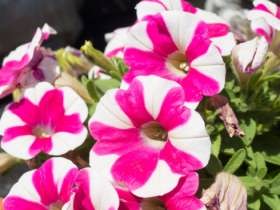
Botswana is internationally acclaimed for its supreme and unforced blend of tourism and wildlife. 17% of the nation is proclaimed protected along with a further 20% comprised of wildlife management areas. Having its eclectic combination of serenely beautiful landscapes and some of the largest populations of wildlife species seen in Africa, Botswana is a premier holiday destination amongst adventure and eco-tourists. Although the country is abundant with cultural and historical heritage Botswana's main places of interest will be the national parks.
Of many parks and reserves which can make up this magnificent country you'll find three definite must sees when visiting Botswana.The Okavango Delta
Undoubtedly probably the most striking region in the country the Okavango Delta is found from the Kalahari Desert which is the maximum inland delta system on the planet. An all natural wonderland of the thousand islands in a thousand streams, born of the great river's determination top meet the sea who's never will, since its strengths are captured from the desert sands which surround the delta.
The delta ranks within the finest of wetlands in the world and previously mentioned it is a vast, fan shaped, emerald wilderness of waterways, lakes, lagoons and lush forests. Over 1000 types of plant are available in the delta and also the rivers are teeming with fish, 80 species overall which draws many birds for the area, the Delta is usually the most celebrated watching birds and angling regions in Africa. The people who in fact permanently live listed below are mainly fishermen. Undoubtedly the simplest way to view this natural wonder is simply by ways of a mokoro that is a dug-out canoe that manoeuvres swiftly through the waters near impenetrable areas. The waters are superior and crocodiles, hippos and a huge selection of fabulous birds is visible and also elephants, zebras and giraffes. The only real area within the Okavango that is certainly protected is the Moremi National Park; all of those other delta is carved up into giant private concessions, sprinkled with luxury lodges.
The Okavango Delta has three main areas, the Panhandle which a 15km wide fault within the northwest offers superb fishing but less spectacular game viewing; the central permanent swamp, with its maze of pans and water meadows along with the arid seasonal swamps to florida and east. In the months of August to November the Okavango is hot and dry making for magnificent game viewing but low waters which often prevent mokoro trips. From December to March the spot is hot and wet prompting game to disappear into the undergrowth however, this is when bird and plant life is at its best.
As independent travel is quite difficult from the delta region many visitors reach experience these amazing swamplands with the aid of tour operators who offer package offers towards the region.
The Moremi Wildlife Reserve
Acclaimed due to the sheer beauty and intense variety of wildlife, this park covers 1812 sq km and is also located in the northeast corner from the Okavango Delta. Consists of lush wetlands, forested islands, lagoons, woodlands and grasslands the Moremi Wildlife Reserve offers spectacular game viewing associated with gorgeous landscapes. There won't be any artificial borers and human encroachment is kept as small as possible, which facilitates game viewing of these excellent nature. Some of the animals you will be able to see are Elephant, Buffalo, Zebra, Kudu, various herds of Buck, Lion, Leopard and Wild Cats. The parks dry months which span from April to October work best months for game viewing; additionally it is during this period that this impressive herds of Elephants converge for the Khwai River.
The park hosts over 400 types of bird so that it is among Botswana's prime birding areas. The Pelicans, Ibises, Herons and Storks are only a few of the species which bring gorgeous splashes of colour and sweet melodies towards the area. The reserve is among the most breathtaking unmarred spots in Botswana and a visit to its tranquil plains is especially recommended.
The Chobe National Park
Botswana's common border with Namibia's Caprivi region may be schedule for starters of Africa's premier wildlife conservation parks. The Chobe National Park occupies 10,566 sq km of land and is also where you can a splendid variety of wildlife. The park includes rivers, swamps, scrublands, grassy savannah and natural pans.
The most magnificent sights to behold listed below are the elephants who move around in their thousands down the well-worn paths from the Chobe River every afternoon to drink. Boasting the best elephant population on earth (approximately 45,000) is in the Chobe National Park's drawcards. Additionally, there are large herds of Buffalo, Blue Wildebeest, Bushbuck, Kudu, Impala and Sable whilst the wetlands are where you can impressive variety of Hippo and Crocodile plus an eclectic range of birds. The Savuti area of the park marks the thing that was once the massive super lake which covered almost all of Botswana, its flat dry lakebed has become an ocean of grass which is renowned for spotting Leopard, Cheetahs, Hyena and Lion.
Apart from certain sections, that are closed within the rainy season during November to April, the park is open throughout the year. Local plumber to go to it's between May and September if it's very easy to see thousands of animals each day. Even though the Chobe National Park is one of Botswana's most developed reserves, lots of the roads in your neighborhood are simply accessible by 4X4 vehicles. Many visitors towards the park opt for package option including luxury accommodation; safari drives several other guided expeditions.
Together with the number of activities, accommodation and travel option offered in this magnificent country, a holiday from the wilderness aspects of Botswana is made simple and easy , accessible for all tourists. Many tour operators offer exceptional packages which let you feel the true essence of Africa.




